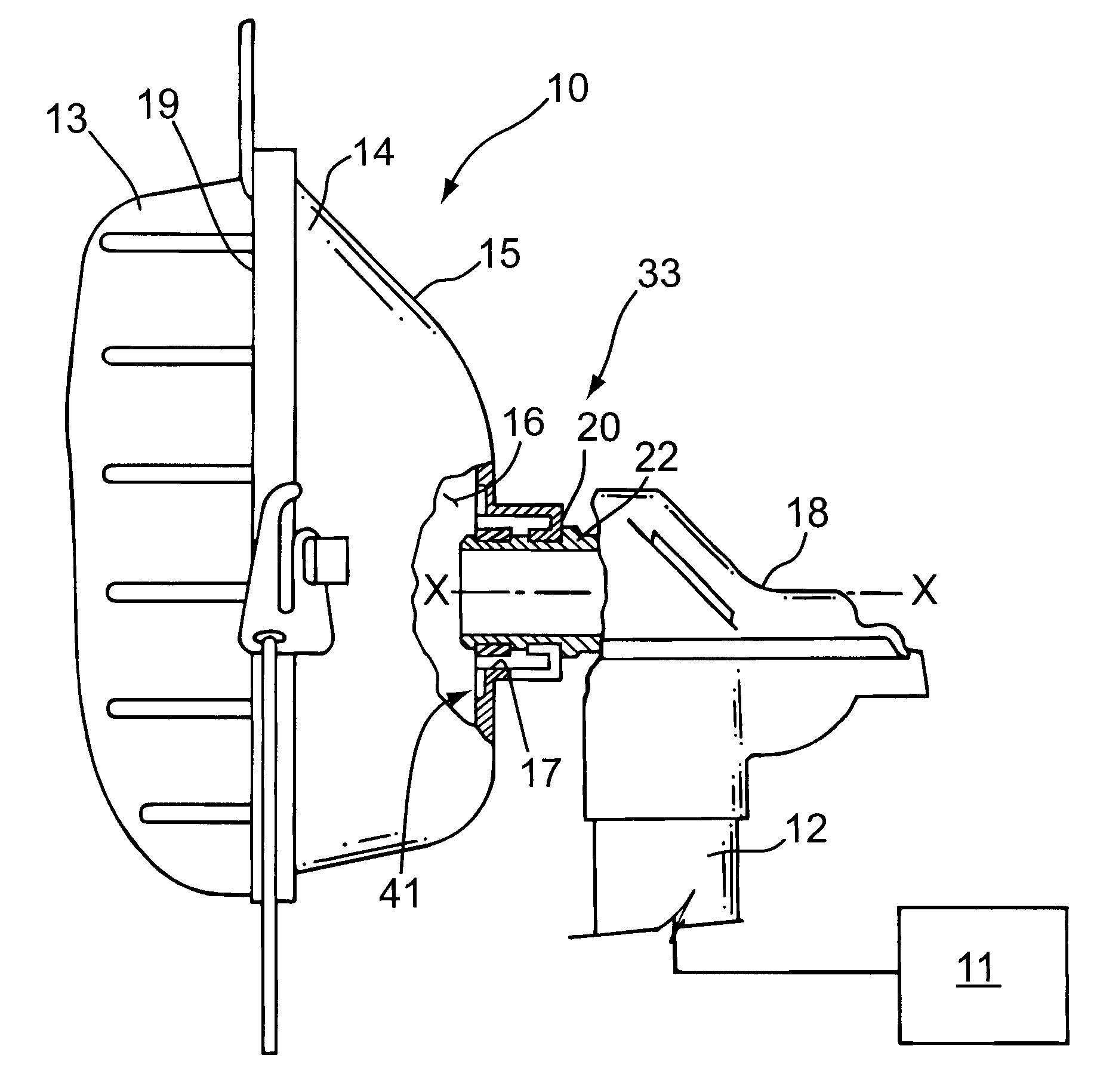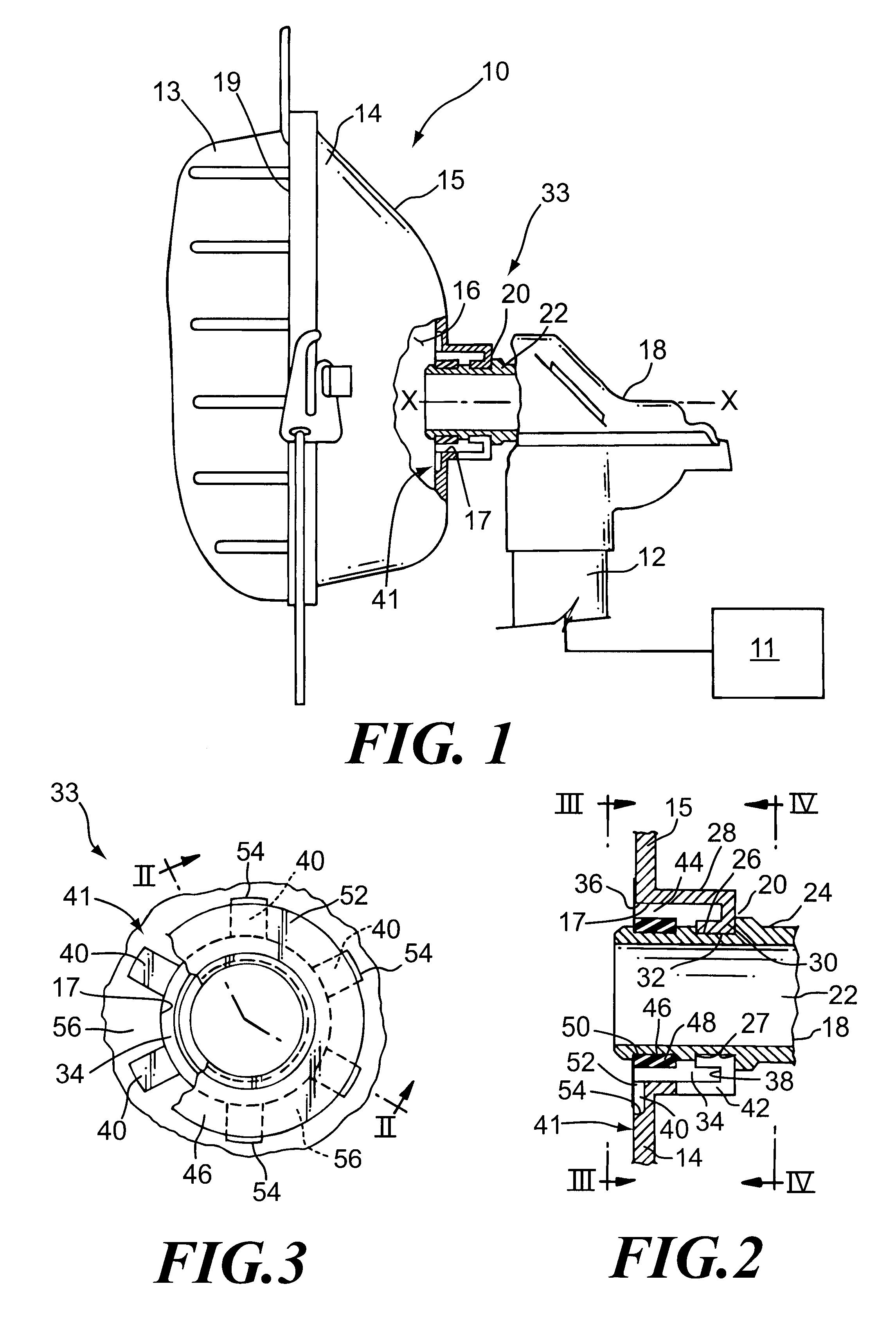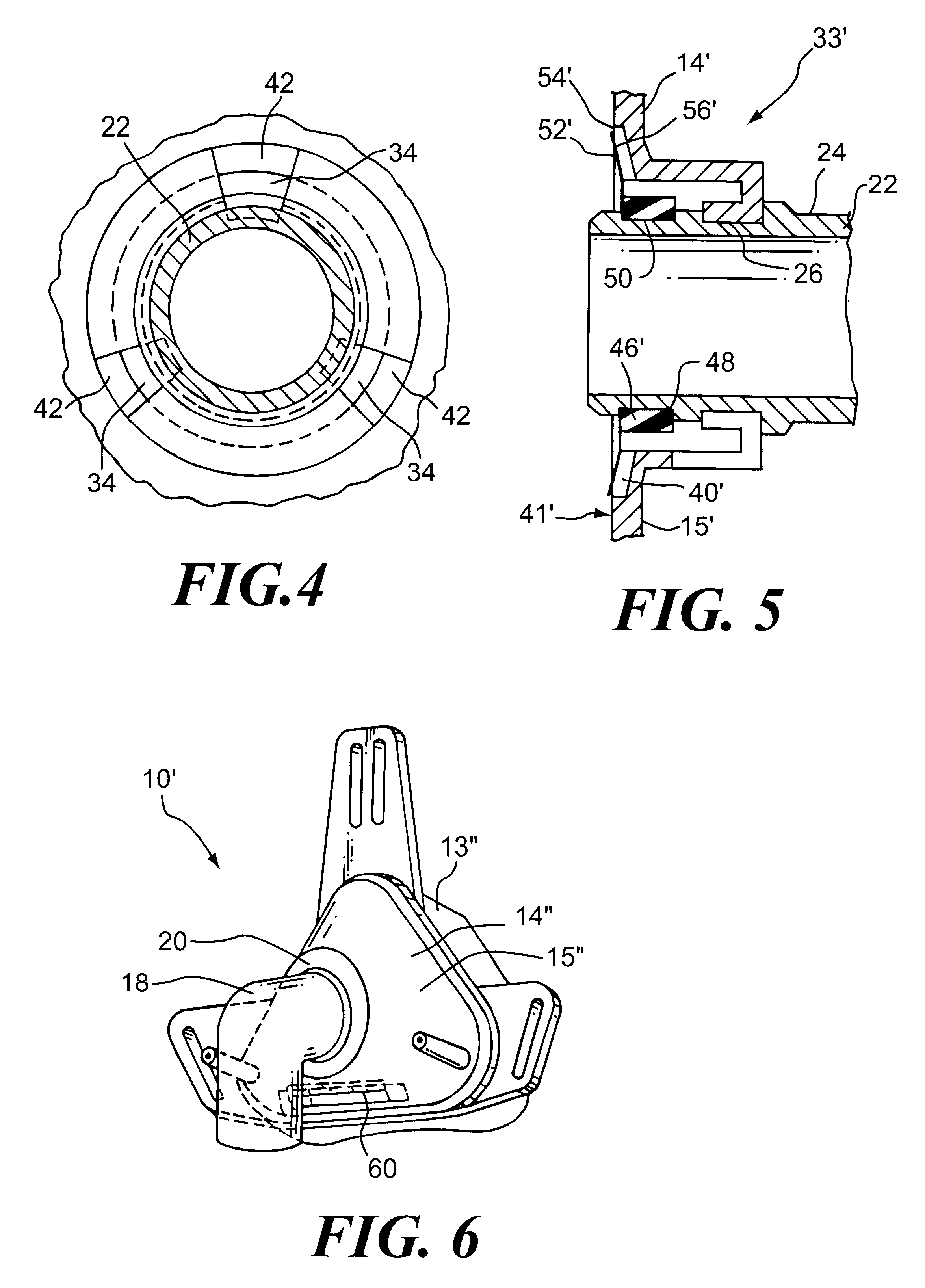Combined patient interface and exhaust assembly
a patient interface and exhaust assembly technology, applied in respirators, breathing masks, breathing protection, etc., can solve the problems of inability to adjust the flow rate of fluid to the square root of pressure, undesirable re-inhalation of exhaled gas, and inability to purge. the natural relationship of fluid flow rate to pressure may be unacceptable in a ventilation circui
- Summary
- Abstract
- Description
- Claims
- Application Information
AI Technical Summary
Benefits of technology
Problems solved by technology
Method used
Image
Examples
Embodiment Construction
There is generally indicated at 10 in FIG. 1 a patient interface assembly for communicating a flow of breathing gas produced by a pressure generator 11 and carried by a patient circuit 12 to an airway of patient (not shown). As the prior art is replete with descriptions of patient circuits and various types of pressure generators, including CPAP devices, bilevel devices, autotitration devices, ventilators, and even a tank of pressurized gas, no further description of these items is necessary for present purposes. In the illustrated embodiment, patient interface assembly 10 preferably comprises either a full or partial face mask 14 that fits over at least part of the patient's face, including the mouth, the nares, or both for communicating a flow of breathing gas from the gas source to an airway of a patient. In the illustrated embodiment, patient interface assembly 10 includes a faceplate 15 and a seal 13 for contacting the surface of the patient. Faceplate 15, seal 13, or both defi...
PUM
 Login to View More
Login to View More Abstract
Description
Claims
Application Information
 Login to View More
Login to View More - R&D
- Intellectual Property
- Life Sciences
- Materials
- Tech Scout
- Unparalleled Data Quality
- Higher Quality Content
- 60% Fewer Hallucinations
Browse by: Latest US Patents, China's latest patents, Technical Efficacy Thesaurus, Application Domain, Technology Topic, Popular Technical Reports.
© 2025 PatSnap. All rights reserved.Legal|Privacy policy|Modern Slavery Act Transparency Statement|Sitemap|About US| Contact US: help@patsnap.com



